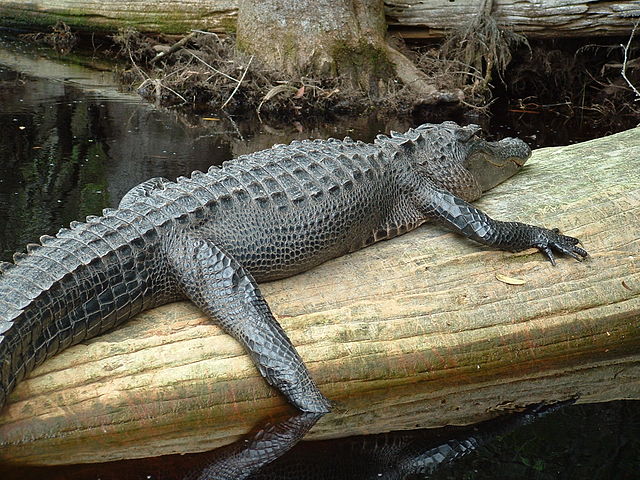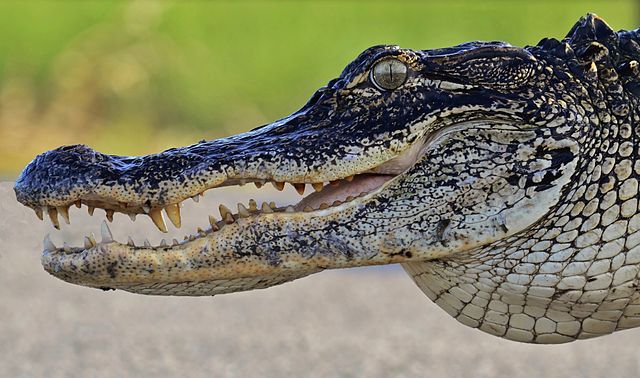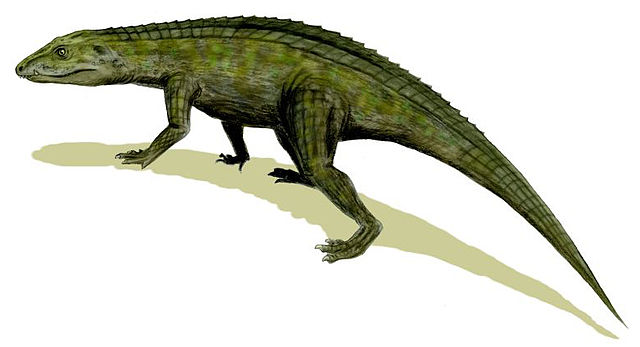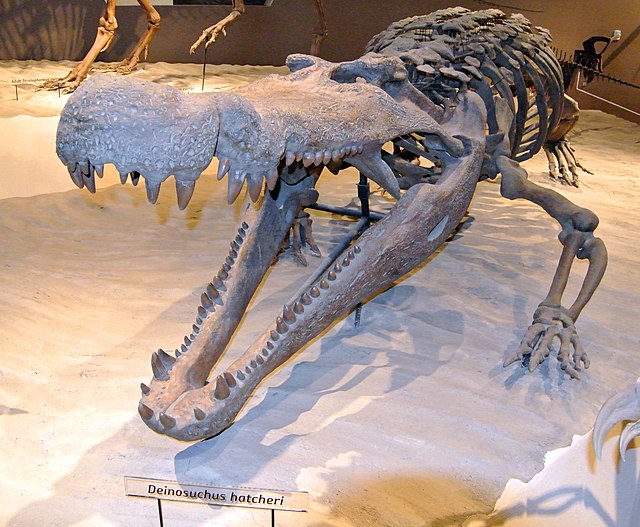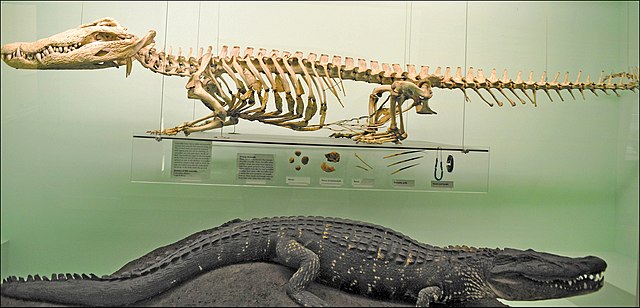The American alligator, sometimes referred to colloquially as a gator or common alligator, is a large crocodilian reptile native to the Southeastern United States and a small section of northeastern Mexico. It is one of the two extant species in the genus Alligator, and is larger than the only other living alligator species, the Chinese alligator.
American alligator
In the Okefenokee Swamp
American alligator skull
American alligator showing teeth
Crocodilia is an order of mostly large, predatory, semiaquatic reptiles known as crocodilians. They first appeared 94 million years ago in the Late Cretaceous period and are the closest living relatives of birds, as the two groups are the only known survivors of the Archosauria. Members of the order's total group, the clade Pseudosuchia, appeared about 250 million years ago in the Early Triassic period, and diversified during the Mesozoic era. The order Crocodilia includes the true crocodiles, the alligators and caimans, and the gharial and false gharial. Although the term crocodiles is sometimes used to refer to all of these, crocodilians is a less ambiguous vernacular term for members of this group.
Crocodilia
Restoration of early crocodylomorph Protosuchus
Skeletal mount of the giant crocodylian Deinosuchus from the Late Cretaceous of North America
Mounted skeleton and taxidermy of Nile crocodile


